Hydro, home brew and quad bikes: What it’s really like to live in Antarctica
THIS is the remarkable story of what it’s like being an ordinary bloke, trying to do an ordinary job, in the most extraordinary place on the planet.
THIS is the moment he hates the most: You’re standing on a beach watching the ship sail away. On it is virtually everyone you’ve spent the past few months with, all going home. Around you are the few who have been left behind. Maybe just 18 to 20 people and they are the only faces you will see for the next eight months.
You look around and say to yourself: “F — k. We’re it.”
Welcome to Antarctica.
We have all heard stories about this last great land, the most remote and hostile environment on earth. Extraordinary stories of survival and exploration.
But what is it like just being an ordinary bloke, trying to do an ordinary job, in the most extraordinary place on the planet?
Brendan Hopkins should know. He’s a plumber who just happens to work for the Australian Antarctic Division at Casey Station, about 3,443 kilometres south of Hobart. When he gets a call-out it’s just like any other job, except that his takes place in temperatures as low as minus 37 degrees.
Before he goes out he has to put on at least two pairs of socks, a pair of thermal pants, a thermal top, a pair of fleece pants, a fleece top, insulated overalls, an insulated jacket, a pair of liner gloves, a pair of wristlets, a pair of external gloves, a spare pair of gloves, a neck-warmer, a balaclava and goggles.
“That’s probably your starting point,” he tells news.com.au over the phone from Antarctica. Then he pauses.
“Oh,” he says. “I forgot to mention the boots.”
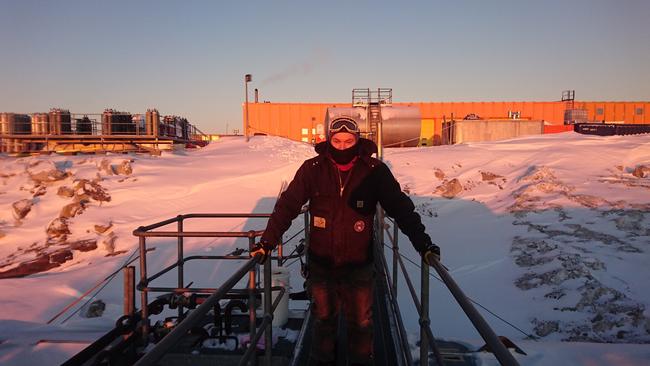
THE BREWMASTER
On the day Brendan is speaking to news.com.au it is a relatively balmy minus 17.4 degrees. He is a bit late coming to the phone because he has just had to respond to a fire alarm.
Ironically, fire is an extremely serious problem in the coldest place on earth because Antarctica is also the driest place on earth — one area has not seen rain in two million years. The lack of humidity makes fire a very big danger and when you’re trying to roll out hoses in subzero temperatures the water freezes very quickly — something a plumber knows all too well. And of course if your house burns down in Antarctica it’s not the kind of place you want to be caught outside in your underwear.
“And getting help isn’t as simple as dialling 000.”
In this case the fire alarm was set off when another plumber was cleaning out the grease trap underneath the kitchen — the worst job at the station — and thought it would be a good idea to spray the smoke detector with the hot water hose.
“It wasn’t,” Brendan observes. The punishment was the standard penalty in the tradesman’s unit of currency. The plumber had to give the rest of the team a carton of beer.
In fact beer is a highly valued commodity at Casey, where the Australian Antarctic Division allows “a small allocation” of home brew to be produced on site.
“Each year one person takes on a secondary duty of Brewmaster,” Brendan says.
“They are responsible for co-ordinating the brewing/bottling process. This year it’s one of the sparkies who has taken on this role — and a big shout out to Zac for keeping the station morale up.”
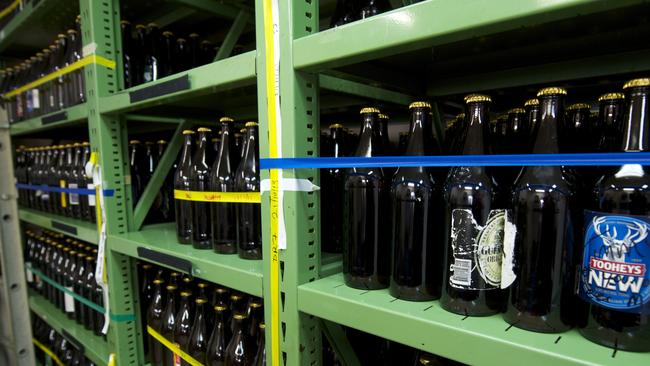
Indeed, it perhaps takes a place as extreme as Antarctica to bring together plumbers and electricians — who are of course sworn enemies in their natural habitat.
Perhaps the most vital form this takes involves one of man’s most vital functions. While for most of us going to the toilet it as simple as sitting down and then pressing a button, on the edge of the Antarctic Circle things are very different.
In most of the pipes around Casey the water runs constantly. The only one in which it doesn’t is the sewer pipe, making it much more at risk of freezing.
“If we get any alarms on our pagers for the sewer line we’ve got to react straight away,” Brendan says.
“Because frozen sewer lines aren’t fun.”
So not fun that the pipes are not only heavily insulated but also heated by electric cables running down them. If they freeze over then the sewage gets backed up and that is not a pretty outcome in a remote enclosed environment.
So what do you do when that happens?
“Generally what happens is we blame the electricians.”

‘F — K. WE’RE IT’
THIS is Brendan’s fourth trip to Antarctica and his third “winter” — a period of around eight months which, combined with the more heavily populated summer periods, means expeditioners are often stuck on the continent for more than a year — away from family, friends, loved ones, the whole world as the rest of us know it.
Three times now he has said goodbye to everyone bar the handful who keep the station operating over those long dark months.
“One of the hardest things to get your head around here as one of the winter team is saying goodbye to everybody at the end of summer and watching that ship sail away. And you turn around and look at the number of people you’ve got for the next eight months and there’s no one else.
“So that first experience for me, where transport back then was all via ship, standing on the beach with 17 other people watching the ship sailing off into the sunset, standing there going ooh. This is it now for eight months. That’s um … That’s an interesting feeling.”
Even now it still hits him.
“This year at Casey there’s 21 of us, looking around going: “F — k. We’re it.”
That first experience for Brendan was at Davis station, which is even further south than Casey. During the winter there is a period of more than 40 “days” where the sun doesn’t even rise. And that does strange things to a person.
“One of my routines in the morning at seven o’clock or thereabouts is to walk into the mess and turn the lights on full bright to get my brain remembering that it’s morning time and time to start thinking about work,” says Brendan, who is also deputy station leader.
“I get a few good-hearted grumbles about that most days!”
Another routine that some crew members sometimes employ to stop them going stir crazy is far more bizarre and yet perfectly sensible.
Believe it or not some things do grow in Antarctica. You might not expect it, but at Casey there is a special hydroponic room set up to make life a bit easier for the residents and give them a bit of a treat. In fact even just going in there and inhaling the contents helps some crew members relax and even gives them a bit of a high.
The nature of this stimulating content does include a range of herbs but not the ones you’re thinking of. It also includes lettuce, tomatoes, capsicum, cucumber and chillies.

For one thing, this provides the only fresh food Casey’s residents can get over the course of a whole year or more. But it also provides something that flourishes on every continent except for this one. Something no one has ever seen or touched but which they suddenly find they miss: Scent.
“One of the things this place is devoid of, obviously, is smells,” Brendan says, “because there’s nothing to smell.”
“It is nice to just go in there and smell something fresh.”
The hydro room — basically two shipping containers — is also warm and light with plants and soil. In other words, it is the closest thing to nature as humans usually know it. And so when people haven’t seen the sun for a while or need even just a scent of home the vegie patch becomes a kind of oasis.
“People do go in there at times to enjoy the warmth and humidity and obviously it’s warmer and brighter in there,” Brendan says.
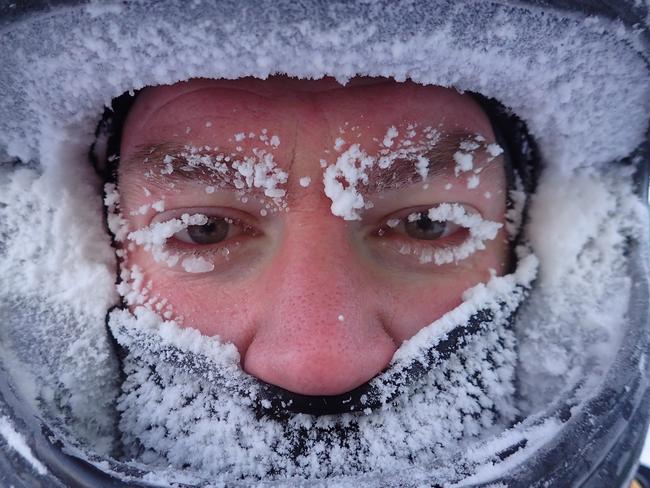
THE LAST GREAT FRONTIER
BUT back to the toilet. Slightly less atmospheric but far more important is the job Brendan has been sent to Casey to do, which is to dispose of the jobs we do.
For most of us this is as simple as pressing the flush button but things aren’t as simple on a continent where international laws prohibit leaving any foreign contaminant behind.
And so instead of just a pipe Casey needs its own wastewater treatment plant. This is Brendan’s great masterpiece — how to turn something into nothing.
First the water is pushed through a mesh screen filter to get rid of any solids — and that’s before it even goes into the treatment plant itself.
Once that has happened, the water is pumped through three tanks: an anaerobic tank (no oxygen), an aerobic tank (lots of oxygen) and a filtration tank in between. Basically there are two types of organisms which consume and break down the waste: some that hate oxygen and some that love it. And so the first lot are starved of oxygen and the second lot are hyper-charged with it, with the water constantly flowing between them. Then, as Brendan says, “the bugs do their thing”.
That thing is to separate the waste from the water at a microscopic level. Normally this is a process that would be aided with a “seed block” to grow the little suckers but again, nothing is ever normal in Antarctica. Because of a strict ban on introducing any foreign organisms into it's a pristine environment, the only bugs that can be used are the ones that the humans bring themselves inside their own guts. This is not a place for people who are in a hurry.
Once the bugs “do their thing” the cleanest of that water is drawn through a filter bank and then sent through some analysing equipment. Then, only if it is pure enough, can it be sent out to sea.
And that is just stage one. The remainder of the waste, known as “sludge”, is then put through a centrifuge where the remaining water is separated from the martyred microbes and that water is then put through the entire process again. Meanwhile the final remaining residue, having had every last tiny drop of liquid squeezed from it, is treated with a special additive and packaged up to be physically taken off the continent.
That, it’s fair to say, is some pretty serious shit.
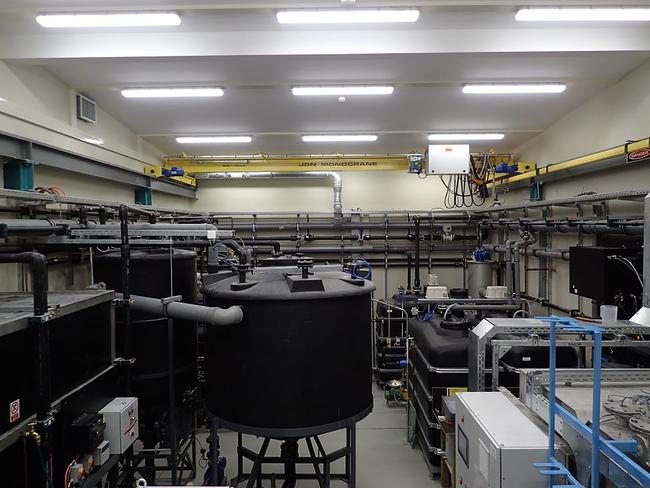
It is also Brendan’s proudest achievement, having set up one such groundbreaking plant in Davis and knowing that he will have done it again when he finally leaves Casey later this year. But it’s the intensity of the environment and the random challenges of the work that lured him here in the first place and what keeps him coming back for more. In between building a whole waste water treatment facility from scratch he’s also helping a carpenter fix a roller door, mastering a lamb roast or trying to avoid cleaning the dreaded grease trap.
Still, it is a hard slog. Expeditioners are carefully screened to make sure they have the right personality and temperament for long periods of isolation with very few people for company. A place where annoying habits get very annoying very quickly. The key is to be immediately upfront and honest about it.
“Open, clear, honest, early communication is the only way you can tackle these things,” Brendan laughs.
The other vital quality is a good sense of humour, as well as a sense of community -- “being willing and able to A) ask for help and B) accept help”.
Indeed, there is a doctor at the station who might be tapped on the shoulder if a crew member notices a colleague is behaving unusually or seems to be struggling. But even in a tiny isolated group the doctor has to maintain patient confidentiality, and so the other residents may never even know if they were right.
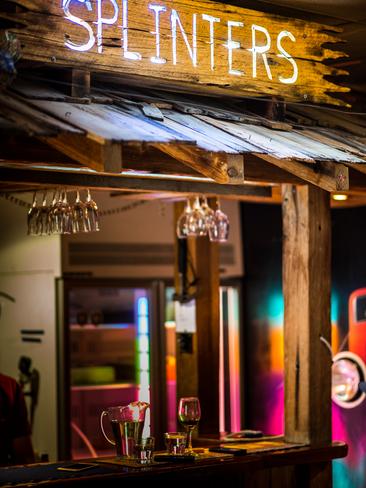
“Definitely as we get to the middle of the year and we’ve been down here for a while and we’ve got a bit to go people can have the odd day that’s not their best day.”
There are tricks too. The expeditioners have shots of liquid vitamin D to compensate for the absence of the sun; they stage their own midwinter plays to keep themselves entertained (this year it’s a stage production of Star Wars) and have set up their own little bar — a place where everybody really does know your name.
And amid and around all this is the unspeakable power and beauty of Earth’s last great frontier. A place that still defies description and that no camera can truly capture.
“No matter what photos we take down here we know we can’t show those at home just how beautiful the environment is down here. The photos we take are excellent but can never truly convey what we see with our eyes. It would be amazing to be able to bring loved ones down here to share this with us.”
Oh, and there is one more thing.
“We have quad bikes down here,” Brendan says. “For, um, research purposes …”
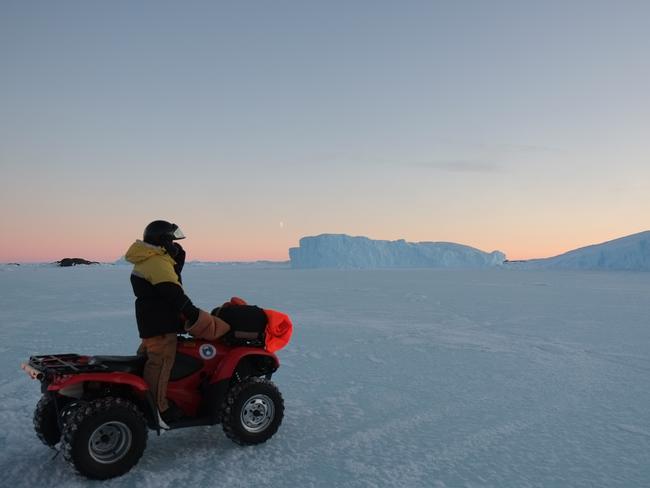
Applications for the next Antarctic expedition open in December. Visit jobs.antarctica.gov.au to register your interest.




